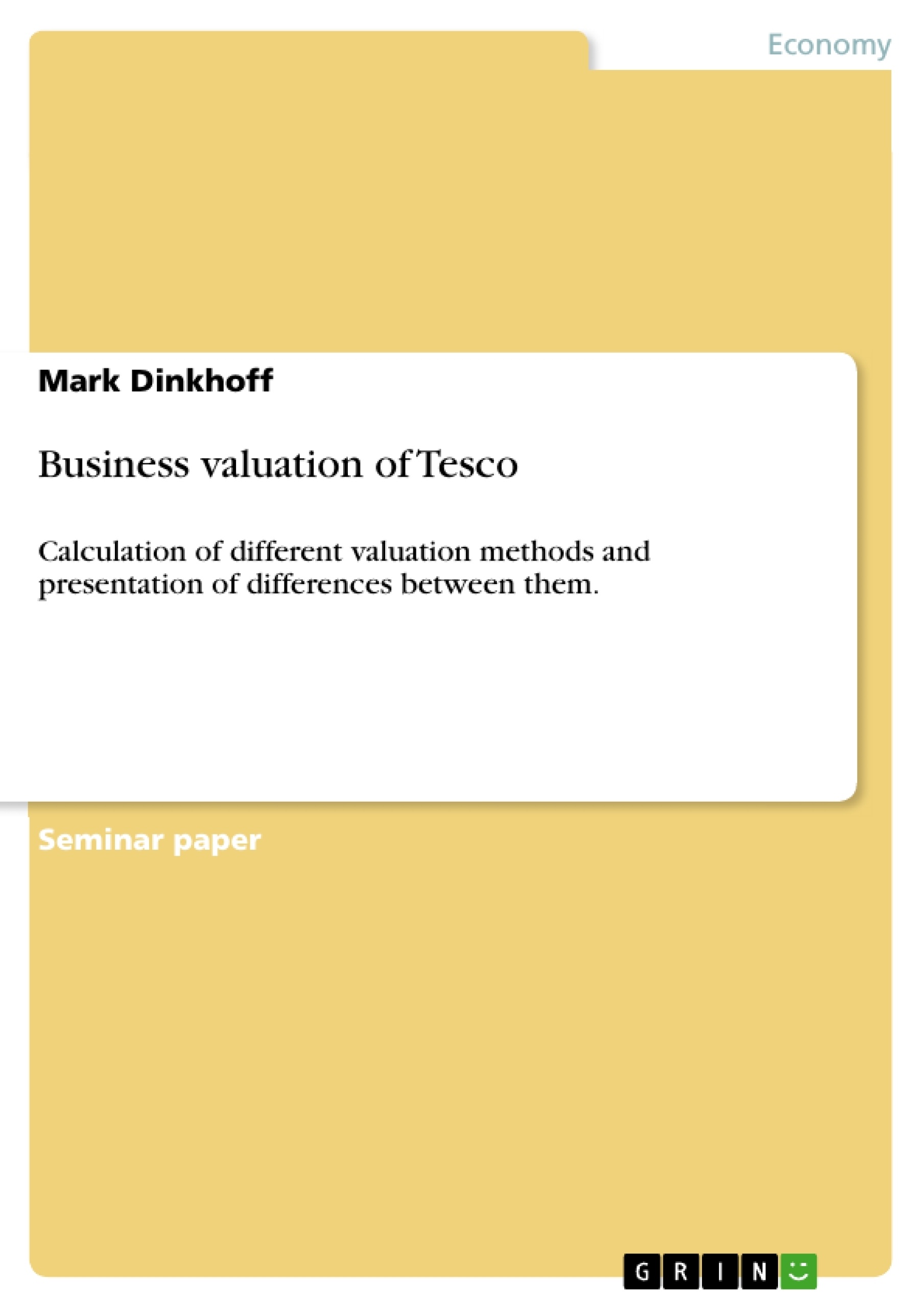Below you will find a financial report about Tesco.plc which is quoted on the London Stock Exchange (TSCO.L). Firstly, the company is valued on the basis of five differ-ent approaches (NAV, PER, DCF, DVM, EVA) and secondly, the different approaches are compared to detect distinctions. Maximising shareholder value is the superior aim in this context but what about claims of stakeholders like workforce for example?
Tesco is one of the world`s biggest retailers with over 2,700 stores worldwide. The core business is food retailing but Tesco has diversified its assortment in recent years into the non-food sector, banking, insurance and telecommunications.1
Tesco had a market capitalisation of 33,144.63 million pounds and 7,919.863 million issued shares on 14.01.2007.2
This coursework underlies the limitation of limited data input. Within the coursework it is not possible to forecast future based figures like growth rates for example as de-tailed as possible, therefore results can have big variations. Nobody is able to predict the future, but more detailed input figures will achieve better results.
Inhaltsverzeichnis (Table of Contents)
- A) Introduction
- B) Methods
- 1. Net Asset Value
- 2. Price-Earnings Ratio
- 3. Discounted Cash Flow
- 4. Dividend Valuation Model
- 5. Economic Value Added
- C) Comparison
- D) CAPM
- E) Appendix
- 1. CAPM calculations
- 2. WACC calculations
- 3. Market capitalisation
- 4. NAV calculations
- 5. DCF calculations
- 6. DVM calculations
- 7. EVA calculations
- F) References
- G) Bibliography
Zielsetzung und Themenschwerpunkte (Objectives and Key Themes)
This coursework aims to evaluate Tesco.plc, a publicly traded company on the London Stock Exchange, using five different valuation approaches. These methods are then compared to understand their distinctions and potential limitations. The coursework also explores the relationship between maximizing shareholder value and the interests of other stakeholders, such as employees. The following are key themes explored in the work:- Valuation of publicly traded companies
- Comparison of different valuation methods
- Shareholder value maximization
- Stakeholder interests
- The limitations of using limited data for valuation
Zusammenfassung der Kapitel (Chapter Summaries)
Introduction
This chapter provides an overview of Tesco.plc and its business activities. The chapter also discusses the importance of shareholder value maximization in the context of the company's operations. The chapter also briefly mentions the limitations of using limited data in valuation.Methods
This chapter outlines the five valuation approaches used in the coursework: Net Asset Value (NAV), Price-Earnings Ratio (PER), Discounted Cash Flow (DCF), Dividend Valuation Model (DVM), and Economic Value Added (EVA). The chapter discusses the advantages and disadvantages of each method, highlighting their strengths and weaknesses.Comparison
This chapter compares and contrasts the results obtained from the different valuation methods applied to Tesco.plc. The chapter discusses the potential discrepancies and inconsistencies in the valuations and their implications for decision-making.CAPM
This chapter explores the Capital Asset Pricing Model (CAPM) as a tool for evaluating the cost of capital for Tesco.plc. It discusses the calculation of the cost of equity and its role in the valuation process.Appendix
The appendix includes detailed calculations for each valuation method. This section provides a breakdown of the data used and the specific calculations employed.Schlüsselwörter (Keywords)
This coursework focuses on the valuation of a publicly traded company, Tesco.plc, using various methods like Net Asset Value (NAV), Price-Earnings Ratio (PER), Discounted Cash Flow (DCF), Dividend Valuation Model (DVM), and Economic Value Added (EVA). Key themes explored include shareholder value maximization, stakeholder interests, and the limitations of limited data in valuation.- Quote paper
- Mark Dinkhoff (Author), 2007, Business valuation of Tesco, Munich, GRIN Verlag, https://www.grin.com/document/136287



